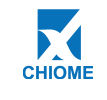Request Demo
Last update 08 May 2025
CXCL3
Last update 08 May 2025
Basic Info
Synonyms C-X-C motif chemokine 3, C-X-C motif chemokine ligand 3, CINC-2b + [11] |
Introduction Ligand for CXCR2 (By similarity). Has chemotactic activity for neutrophils. May play a role in inflammation and exert its effects on endothelial cells in an autocrine fashion. In vitro, the processed form GRO-gamma(5-73) shows a fivefold higher chemotactic activity for neutrophilic granulocytes. |
Related
1
Drugs associated with CXCL3Mechanism CXCL1 inhibitors [+3] |
Active Org. |
Originator Org. |
Active Indication |
Inactive Indication- |
Drug Highest PhasePreclinical |
First Approval Ctry. / Loc.- |
First Approval Date20 Jan 1800 |
100 Clinical Results associated with CXCL3
Login to view more data
100 Translational Medicine associated with CXCL3
Login to view more data
0 Patents (Medical) associated with CXCL3
Login to view more data
1,293
Literatures (Medical) associated with CXCL301 Jun 2025·Respiratory Medicine
Nicotine in E-cigarette aerosol may lead to pulmonary inflammation
Article
Author: Bosson, Jenny A ; Mobarrez, Fariborz ; Lyytinen, Gustaf ; Antoniewicz, Lukasz ; Hedman, Linnea ; Kabéle, Mikael ; Lundbäck, Magnus
01 Jun 2025·Pathology - Research and Practice
Regulation mechanism of chemokine CXCL3 in nasopharyngeal carcinoma
Article
Author: Zhai, Shumin ; Huang, Weiyuan ; Zhuang, Jiafeng ; Huang, Jing ; Lin, Peixin ; Yan, Jiecheng ; Jiang, Danxian
01 May 2025·International Immunopharmacology
Candidalysin induces Tim-3 expression in macrophages to suppress antifungal immunity in oropharyngeal candidiasis
Article
Author: Deng, Weiwei ; Zhang, Zhiwen ; Tian, Yuyang ; Liang, Yunsheng ; He, Yuchen ; Liu, Siqi ; Li, Chunyan ; Ma, Yubo ; Lin, Kefan ; Luo, Yurong
1
News (Medical) associated with CXCL313 Dec 2024
iStock,
Polinmr
Incyte is abandoning its ALK2 blocker zilurgisertib, which it was trialing for myelofibrosis-associated anemia, while iTeos will deprioritize the development of inupadenant after it failed to meet the biotech’s clinical bar in a Phase II study of metastatic non-small cell lung cancer.
The oncology space on Thursday lost two pipeline treatments after
Incyte
and iTeos Therapeutics announced that they were discontinuing the development of respective drug candidates following underwhelming readouts.
Incyte revealed in an investor conference call on Thursday that it would no longer advance zilurgisertib, an investigational ALK2 inhibitor, in myelofibrosis-associated anemia, according to investor notes from William Blair and BMO Capital Markets. The company said it will continue to develop zilurgisertib in fibrodysplasia ossificans progressiva.
The drug candidate was in very early stages of development for both indications, with the company still working on clinical proof-of-concept studies for the candidate before deciding to discontinue it. By blocking ALK2, zilurgisertib is designed to boost the production of the liver hormone hepcidin, in turn increasing plasma iron levels, promoting the production of red blood cells and suppressing ossification. The decision to discontinue zilurgisertib for myelofibrosis-associated anemia comes after the candidate’s “limited efficacy” in a Phase I trial, according to William Blair.
Meanwhile, BMO Capital Markets noted that the move “adds to growing list of pipeline misses,” though the firm ultimately did not find this development surprising. In its third-quarter report in October, Incyte leadership had indicated that “zilurgisertib needed to be dosed higher than initially expected to see signs of more promising efficacy,” which could indicate weak overall activity, BMO analysts wrote.
The discontinuation follows Incyte’s recently scrapping of MRGPRX4 antagonist INCB000547. The biotech announced last month that Phase II data for the candidate
fell short
of expectations and thus do not support further investment into its development. Incyte was developing INCB000547 for chronic pruritus.
Joining Incyte’s cancer cut is iTeos, which on Thursday
announced
that it has “deprioritized” the development of its small molecule A2AR blocker inupadenant in metastatic non-small cell lung cancer (NSCLC) because the candidate “does not meet sufficient level of clinical activity to warrant further investment,” CEO Michel Detheux said in a statement.
The decision was based on Phase II data showing that a combination regimen of inupadenant with carboplatin and pemetrexed yielded a 63.9% overall response rate in post-immunotherapy patients. Median progression-free survival (PFS) across all doses was 7.7 months. An exploratory analysis of the mid-stage trial also showed that inupadenant treatment restored normal levels of the CXCL3 chemokine, a biomarker known to be associated with clinical activity.
Still, iTeos is funneling resources away from inupadenant and instead prioritizing the development of its other “differentiated, first- or best-in-class therapies,” Detheux said. It is not yet clear which candidates the biotech plans to focus on, though Detheux noted that the company will provide more details regarding its pipeline in 2025.
Correction (Dec. 16): The original version of this article erroneously stated that Incyte is completely discontinuing development of zilurgisertib. In fact, the candidate is still in development for fibrodysplasia ossificans progressiva.
BioSpace
regrets the error.
Phase 2Clinical ResultImmunotherapyPhase 1Clinical Trial Failure
Analysis
Perform a panoramic analysis of this field.
login
or

AI Agents Built for Biopharma Breakthroughs
Accelerate discovery. Empower decisions. Transform outcomes.
Get started for free today!
Accelerate Strategic R&D decision making with Synapse, PatSnap’s AI-powered Connected Innovation Intelligence Platform Built for Life Sciences Professionals.
Start your data trial now!
Synapse data is also accessible to external entities via APIs or data packages. Empower better decisions with the latest in pharmaceutical intelligence.
Bio
Bio Sequences Search & Analysis
Sign up for free
Chemical
Chemical Structures Search & Analysis
Sign up for free
